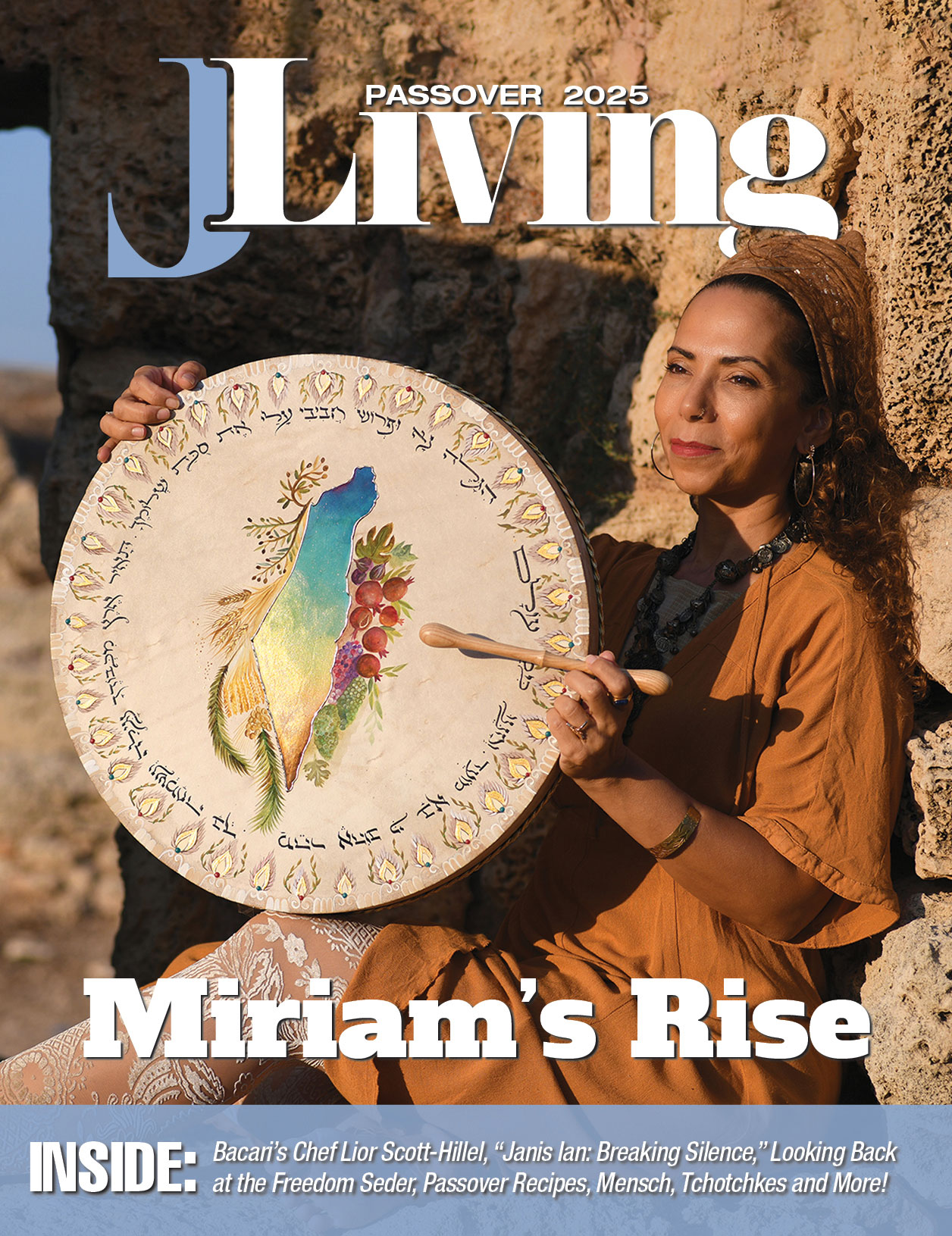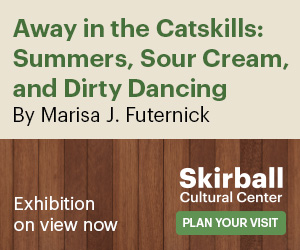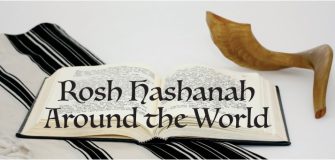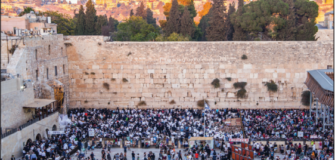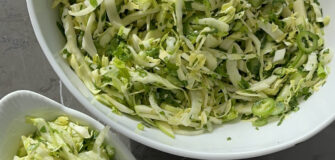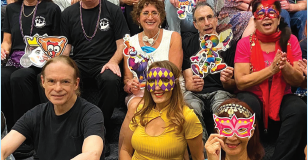Purim: How Do You Celebrate?
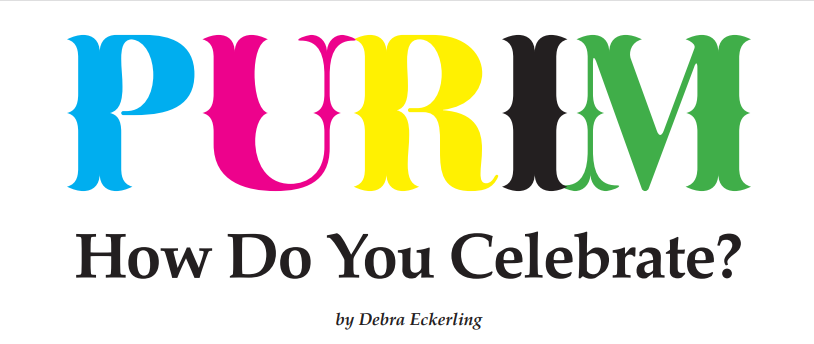
When you are a kid, Purim is the greatest. You get to dress up in elaborate costumes, hear stories, and are encouraged to make lots of noise. In many cases there’s a carnival involved. I remember the annual carnival being the highlight of my Hebrew school years.
When you’re an adult, you may experience the fun through your kids but what about those young-adult, no kids, older kid, or empty nest years? Sure, you can send a mishloach manot (gift basket) to your college-aged kid … who may be celebrating at the local Hillel. But is that really the best way to honor this lesser known, but still important holiday?
For those who need a refresher, Purim commemorates the defeat of Haman’s plot to massacre the Jews, as recorded in the book of Esther. Held in the Spring on the 14th or 15th day of Adar, this year it starts at sundown on March 6.
Synagogues read the magilla, you make and eat Hamantaschen, and perhaps perform a purim spiel. There is partying, dancing, and eating involved … Actually, feasts are part of most Jewish holidays.
So, what happened to Purim? And how do people really celebrate? I asked around …
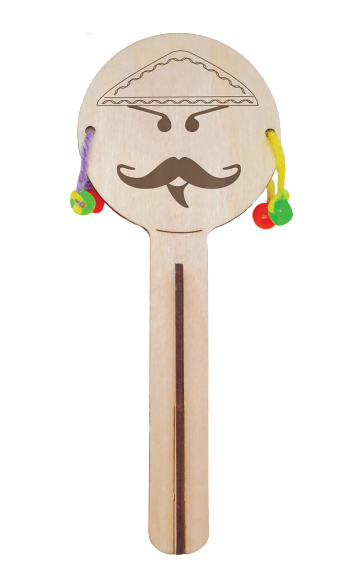
Hamantashen
“Every year, I invite my parents (and often my mother-in-law, too) to bake hamantaschen with my daughters and me in preparation for Purim,” shares Michal Levison, MAPP, a speaker, cookbook author, and founder of Seasoned Moments.
“We use my paternal grandmother’s recipe, which I have enhanced a bit throughout the years. We use lots of different fillings from the traditional (apricot preserves and poppy seed mohn) to the newfangled (smores and snickers). We spend several hours in the kitchen rolling, filling and baking the cookies. It is a wonderful tradition that connects us to our culture, our ancestors and each other.”
When Dawn Kahan Metcalf, an author in West Hartford, Connecticut described the story of Purim to some non-Jewish friends, “I went into detail about hamantaschen translating to “Haman’s hats”–the villain’s hat with three corners–that we traditionally ate on the holiday,” she explains.
“‘Mordechai and Esther defeated Haman,’ I said. ‘And so we drown out his name by making lots of noise whenever it’s said aloud in the Story of Esther…and then we eat his hat!’ My oldest child piped in, “Yeah! They’re Spite Cookies!” We all laughed, and the name stuck.”
“Now,” adds Metcalf, “Their friends ask them to make “Spite Cookies” at college!”
Giving
Every year on Purim, Thomas Foster and his family make a point to visit those who are isolated or in need of companionship. Foster, has children ages 12 and 16, who love to participate.
“This tradition of visiting the sick and those who are isolated is an important part of the holiday, and it’s something that my bubbe taught me was important,” Foster, Community Manager at Facialteam, says.
”In the past, we have visited seniors in nursing homes and spent time with individuals who are homebound, bringing them joy and companionship during the holiday, and sometimes even bringing some mischloach manot. Participating in this tradition also allows my kids to learn about the importance of compassion and giving back, which are values that I believe are essential for helping to create a better world.”
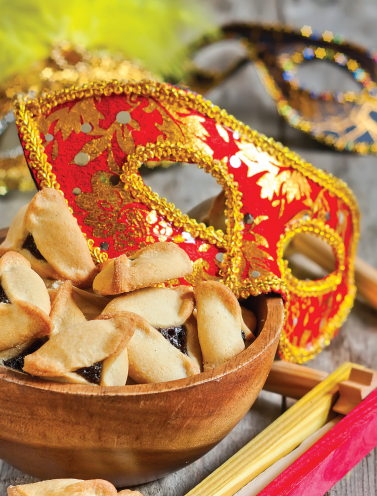
Celebrating
Jean Roth, a designer in Los Angeles, once created a Purim-themed game for a JNET mixer, where people could identify their business styles with the characters from the Book of Esther. It was funny and fun.
Roth has fond memories of dressing up as a kid. “When I was a kid. I even designed my own costume,” she says. “One year, when I was around 9, I went as a Torah! (Well, the cover.) I have a photo and even still have a brooch with a chai that I got as a prize!”
Pamela Barroway, an editor from New Jersey, thought she stopped actively celebrating Purim years ago, “Other than going to Friday night services that particular week,” she says.
“I do take out a grogger that makes a reeeeaaaallly annoying noise and rattle it around periodically. That really makes my teen happy [extreme sarcasm font],” she shares. “I do make hamantaschen every year, and that makes [my husband and son] very happy. So, I guess I do celebrate it after all!”
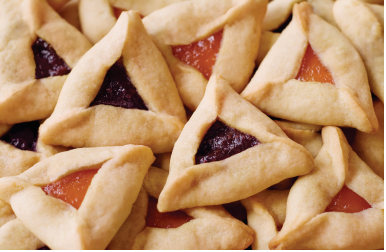
Community
This last story comes from a woman from Hamilton Canada, who believes the best mitzvah is one that no one knows about, so she asked not to include her name.
“We moved to a new city last year and didn’t know anyone to hand out mishloach manot to, so instead we decided to take the kids to the grocery store and pick out a bunch of stuff for the community fridge in our neighborhood,” she shares. “It was wonderful for us and the kids to have the opportunity to connect with our new community and to teach our kids about the importance of helping others.”
She continues, “Filling the community fridge was a great way to extend our giving last Purim. Seeing our kids have meaningful conversations about the holiday and its significance is also so valuable so we plan to continue it every year, even though we now know the community and have neighbors to hand out mishloach manot to.
Wishing you a joyous and meaningful Purim!”

